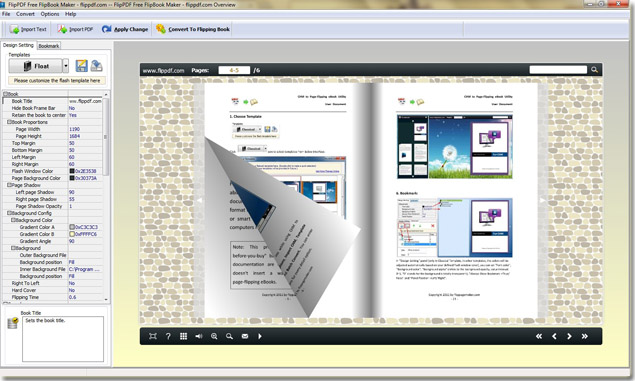

The first flipbook appeared in 1868 when it was patented by John Barnes Linnett under the name kineograph (Latin for "moving picture").

It was similar to a zoetrope, but used mirrors to simplify the viewing process.

(Maybe it was similar to the way you felt when you saw a flipbook work for the first time.) Another moving image invention was the praxinoscope, invented in 1877 by Charles- Émile Reynaud. Zoetrope means “wheel of life.” How amazing and magical it must have been to see moving images for the first time. A few years later, the daedaleum (later called a zoetrope) was invented by William Homer, and it allowed more than one person to view the moving images at the same time. The very first invention of this kind was the phenakistoscope (how’s that for a crazy name!?), invented in 1829 by a Belgian named Joseph Plateau. The inventors pasted still images inside the drum, and when it was turned with a crank and viewed at a certain angle, the images blended together to appear as if they were moving. The earliest devices that created the illusion of moving images and animations were small mechanical machines that were shaped like a cylinder or circular drum, like a tiny merry-go-round. And each one learned important lessons and principles from the ones before them. It’s a fascinating history involving extremely creative photographers, inventors, artists, engineers and scientists. (Sometimes moving images are called an “animation” – (other types of moving images include “movies,” “films,” “cartoons,” and “videos”). Let’s take a look at the history of moving images. Remember, this works best when each picture is similar to the next one. They are blending individual images together to give the illusion of real movement.
#PICTURE FLIP BOOK MAKER MOVIE#
That's exactly what your eyes and brain are doing when you watch a movie or an iPhone video or a flipbook. Your eyes have the ability to blend these images together so that the brain "sees" them as smooth movement. What is persistence of vision? It is the phenomenon that happens when your eye and brain see two or more images very quickly, one after the other. And this illusion, of still images that look like moving images, takes place because of a fancy term known as persistence of vision. The moving images are all an illusion created by showing still images very quickly.
#PICTURE FLIP BOOK MAKER TV#
Now think about this: Every movie you see at a theater, every TV show you watch, every Youtube video, every iPhone video, every video game, even every Imax movie works on the very same basic principle as a flipbook. This is an illusion of course, but it’s rather amazing how much they look like moving images. However, when you flip the pages quickly, the pictures really look like they’re moving. It might be a drawing of a house, or a photo of a butterfly, or a picture of a dinosaur, but each image on each page is motionless on a piece of paper – it does not move at all. Think about this: Every picture in a flipbook is still. A History of Flipbooks and the Moving Image Flipbooks, Crazy Names, Movies.


 0 kommentar(er)
0 kommentar(er)
